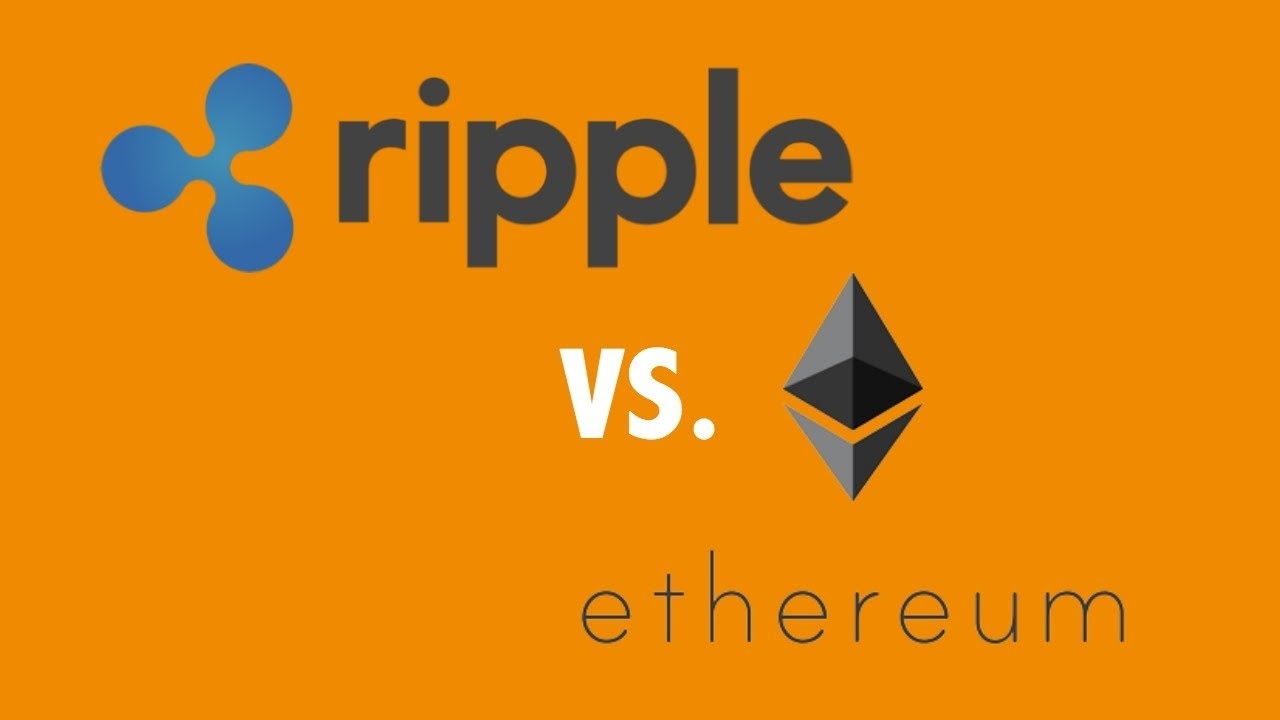
Ripple and ether are two of the biggest cryptocurrencies by market capitalisation. Here we compare the two coins and their respective networks – RippleNet and Ethereum. Discover the technology behind each cryptocurrency, their pros and cons, and most importantly for traders, what moves their prices.
Introduction to Ripple (XRP)
Ripple is a cryptocurrency, which is commonly identified by the three-letter code ‘XRP’. It runs on top of RippleNet, a blockchain network that connects to banks’ software and enables to them to communicate directly with each other to confirm transactions. The cryptocurrency, software and network are tightly controlled by Ripple Labs (sometimes called ‘Ripple’ for short), so any bank or institution joining RippleNet must be approved by this company.
What sets RippleNet apart is that each bank in the network is a ‘gateway’ through which money and other assets can move in and out of the system. Each gateway approves the other gateways that it trusts, with the network then establishing trust lines across the network to facilitate payments. Payments can be made using any currency or asset, with the network selecting the cheapest route. XRP is the common currency of the network and is used to provide liquidity when necessary – for example, if converting GBP into an exotic currency.
Introduction to Ethereum (ETH)
The word Ethereum is commonly used to refer to the cryptocurrency ether (ETH). But, strictly speaking, such uses are not accurate. Ethereum is really the name of a decentralised network, which is underpinned by the cryptocurrency. Both were invented by Ethereum co-founder, Vitalik Buterin.
What sets the Ethereum network apart from most others is that it enables users to create decentralised apps (‘dapps’) and smart contracts. Dapps are essentially software applications that run across a network of computers, and therefore run without the possibility of interference or downtime (at least according to the Ethereum Foundation). Smart contracts are binding agreements, which are written as lines of code and can therefore automatically enforce their own clauses. Ether is used to process transactions on the network, including those automated by dapps and smart contracts.
How does the technology compare for ripple and ether?
Both ripple and ether are powered by blockchain technology, which enables their respective networks to validate transactions. It does this by defining a protocol by which the order of transactions is checked against a shared transaction history and agreed by the network. This prevents users from spending their cryptocurrency tokens more than once, because all pending transactions are checked against the shared transaction history and dismissed immediately if they don’t align with it.
However, while both cryptocurrencies solve this so-called ‘double-spend problem’ using blockchain, the way their respective systems validate transactions couldn’t be more different. Let’s take a look at each method in turn.
What is the technology for ripple (XRP)?
RippleNet uses an unusual form of blockchain technology, which approves transactions using what it calls a ‘consensus’ or ‘distributed agreement’ protocol. This essentially asks the network of gateways to agree upon an order for transactions, with it simply taking the majority view.
Ripple Labs claims that this system has a number of advantages over other systems. It is, for example, less energy intensive than the ‘proof-of-work’ algorithms used by bitcoin and ether, while it also enables more than one participant to add transactions to each block. However, this is only possible because Ripple Labs approves the gateways, which has led critics to claim that it is not really a decentralised cryptocurrency.
What is the technology for ether (ETH)?
Ether uses a ‘proof-of-work’ algorithm to approve transactions, which means that computers in the Ethereum network compete to validate pending transactions. They each check a group of pending transactions against the network’s shared history and compile the ones that align with this into a new block. They then attempt to generate a cryptographic signature for their block – based on the data contained within it – through a process known as ‘mining’.
This system works because these cryptographic signatures (known as hashes) are very difficult to generate, but easy for other machines in the network to verify. The difficulty of generating them is adjusted so that only one complete block is generated every 15 seconds or so across the whole network. This leaves enough time for the other machines to check the block’s validity and update their records, ensuring that the order of transactions is agreed across the network.
Ripple vs ether: pros and cons
With such different offerings, it’s not surprising that both ripple and ether have different pros and cons:
Ripple pros:
- RippleNet has been widely adopted by banks and other financial institutions
- Offers lightning-fast transaction speeds
- XRP can provide liquidity in any currency
Ripple cons:
- RippleNet can run without XRP
- Ripple Labs controls the network, so some claim it is not truly decentralised
- RippleNet uses a consensus algorithm, which could be open to exploitation by groups of gateways (mainly banks) if they could agree to work together
Ether pros:
- Runs on the Ethereum network, which enables users to create dapps and smart contracts
- Ether is essential to process transactions on the network
- Fast transaction speeds
Ether cons:
- Uncapped supply means that it could be inflationary
- Can only process around 20 transactions per second at the moment
- Uses a proof-of-work algorithm, which is energy intensive
What affects the value of ripple (XRP) and ether (ETH)?
Cryptocurrency markets tend to be very volatile, and ether and ripple are no exception. For this reason, it is essential to understand how supply and demand factors can affect their prices. Here we take a look at each in turn.
What is the supply of ripple and ether?
Like traditional ‘fiat’ currencies, the supply of ripple and ether varies over time with these changes affecting their valuations. If demand were completely static, their prices would fall as supply increases and rise as it falls.
Of course, in reality, things are not quite this simple as demand shifts over time – though as a general principle it tends to hold true. Cryptocurrency tokens tend to be more valuable when there is a limited supply, than when there is a more plentiful supply.
What is the circulating and maximum supply for ripple (XRP)?
The circulating supply of ripple is close to 40 billion coins (as of October 2018). The maximum supply is 100 billion.
Ripple Labs previously controlled all of the remaining coins, but 55 billion were moved into an escrow account in December 2017. From this pool, one billion coins are made available to the network every month. Any that remain unclaimed are put back into escrow and held for a future month. The idea is to provide a degree of certainty about how many coins can enter the market at any given time.
What is the circulating and maximum supply for ether (ETH)?
There are currently more than 102 million ether coins in circulation, and there is no maximum supply. However, a maximum number of 18 million new coins can be created each year. These are given to users as a reward for ‘mining’ (the process by which transactions are verified).
When thinking about the supply of ether, it is also important to factor in that a small amount is ‘burnt’ as ‘gas’ in each transaction – meaning some ether is destroyed. This creates a cost that prevents users from spamming the network. It is expected that approximately 1% of ether will be burnt this way each year, so this deflationary pressure should be outweighed by the inflation from mining for many years to come.



















